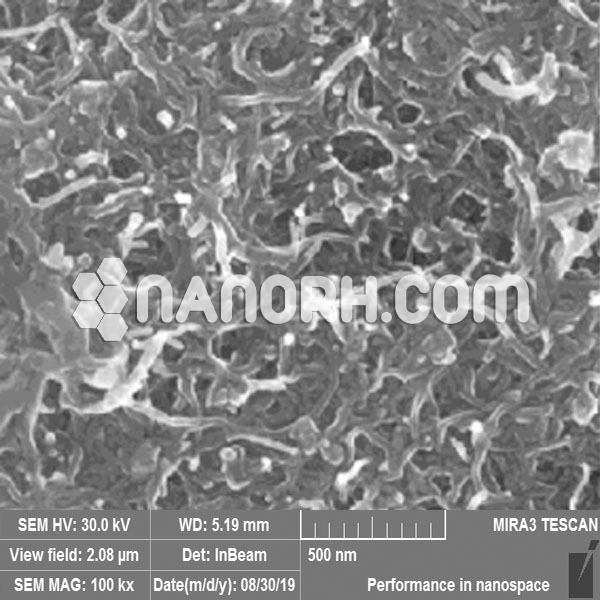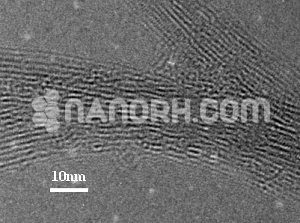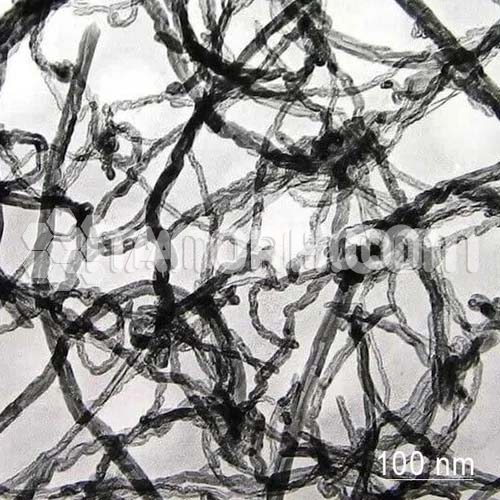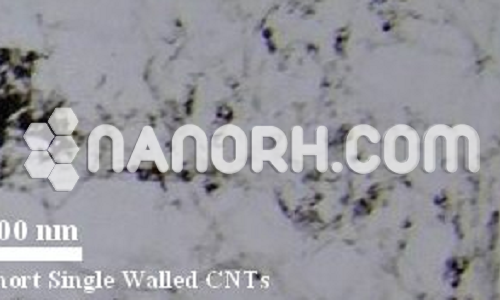| OH Functionalized Short MWCNTs | |
| Product No | NRE-35004 |
| CAS No. | NA |
| Purity | Carbon nanotubes > 95wt% |
| Average Diameter | 50-80 nm |
| Average Length | 0.5-2 um (TEM) |
| Special Surface Area(SSA) | >200m2/g(BET) |
| Tap Density | 0.22g/cm3 |
| True Density | 2.1g/cm3 |
| Electric Conductivity | > 100 S/cm |
OH Functionalized Short MWCNTs
Multi-walled carbon nanotubes (MWCNTs) are a class of nanomaterials that have garnered significant attention due to their unique structural and electronic properties. Composed of multiple layers of graphene sheets arranged concentrically, MWCNTs exhibit extraordinary mechanical strength, thermal conductivity, and electrical properties, making them attractive for a wide range of applications in electronics, materials science, energy storage, biotechnology, and more. However, pristine MWCNTs are often difficult to process and integrate into various materials due to their hydrophobic nature and tendency to aggregate. To address these challenges, functionalization techniques are commonly employed to modify the surface of MWCNTs.
Functionalization
The process of introducing hydroxyl groups to the surface of MWCNTs typically involves oxidation reactions. These reactions break the graphene structure of the nanotubes and introduce oxygen-containing functional groups, including hydroxyl (-OH) groups. There are several methods for achieving this, including:
Acid Treatment: One common approach is to treat MWCNTs with a mixture of concentrated sulfuric acid (H₂SO₄) and nitric acid (HNO₃). This treatment introduces hydroxyl groups along with other oxygen-containing groups, such as carboxyl groups (-COOH), on the MWCNT surface.
Hydrogen Peroxide (H₂O₂) Treatment: Hydrogen peroxide can also be used to introduce hydroxyl groups to MWCNTs. This method generates hydroxyl groups by breaking the carbon-carbon bonds in the nanotube structure, leading to the formation of -OH groups.
Plasma Treatment: Another approach involves exposing MWCNTs to oxygen or air plasma, which results in the formation of hydroxyl and other oxygenated functional groups on their surface.
UV or Ozone Treatment: Ultraviolet light or ozone can be employed to generate reactive oxygen species, which can introduce hydroxyl groups on the MWCNT surface.
The hydroxyl groups enhance the hydrophilicity of the MWCNTs, allowing them to disperse more easily in water and other polar solvents. Additionally, the introduction of hydroxyl groups increases the reactivity of MWCNTs, enabling further chemical modifications or the attachment of functional molecules for specific applications.




